Subscribe by Email
-
Recent Posts
Category Archives: Books
The Darlings and Les Miz
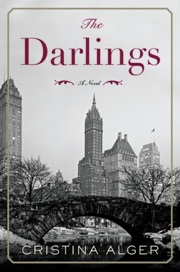
I finished my year in reading with Cristina Alger’s financial thriller “The Darlings,” which is a quick, entertaining novel about the reverberations surrounding what turns out to be a Ponzi scheme at a large hedge fund in New York.
It begins as the manager of the fund has apparently jumped off the Tappan Zee Bridge right as the SEC has started to close in on him, leaving his business associates reeling as the far-reaching sham is ultimately revealed. The fund’s founder, billionaire investor, Carter Darling pleads ignorance of the scheme and tries to keep his wife, two daughters and sons-in-law together in its wake. But chaos and questions abound, notably, will his son-in-law, Paul, the firm’s general counsel, stand by the family patriarch or cut a deal to save his own skin, and who in the end who will be left standing.
“The Darlings” is a story of a rich New York family’s undoing, where bonds and loyalties are put through the ringer. It definitely reminded me of the Bernie Madoff scandal and family, and vividly sets the scene of a New York in crisis, around the time of the financial crash in 2008 when Lehman Brothers and Bear Stearns went kaput and thousands lost their jobs. The characters are all seemingly both good and bad and the lines get blurred between who’s guilty, responsible or a victim, which makes for a good thriller-type book. I found “The Darlings” slick and well-done but ultimately I was glad to leave behind the unsettling, Madoff-like moneyed atmosphere it conjures.
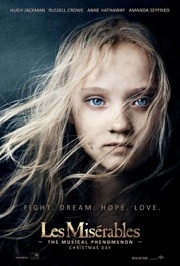
Meanwhile, I was able to see the musical film “Les Miserables” this week with eight of my relatives, which was a bit fun. Most of them had seen it before as the Broadway musical or as the 1998 film starring Liam Neeson, but this was my first time seeing it. While I liked some of the songs, music and performances in it, I found that as a musical it wasn’t exactly my cup of tea; I’m not a true fan or follower of musicals generally. Yet I appreciated “Les Miz’”: its history, the book, its period of revolutionary France and its story of redemption. It was epic in scale no doubt and I was curious to see it. But I didn’t feel it was exactly for me, and some parts seemed to drag, while others were more interesting. Perhaps I just need to dive into the soundtrack. What did you think of it? Continue reading
Posted in Books, Movies
14 Comments
Two Books in Brief
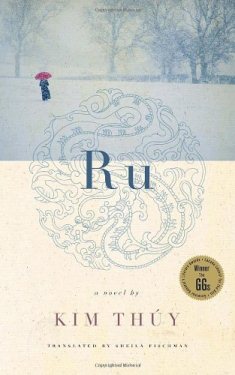
I enjoyed the two books pictured in this post this week. You wouldn’t think they would have any similarities in common, other than their short length. Yet both include some vivid sentences and wisdom.
As for “Ru,” I was drawn to it after I heard the author Kim Thuy talking about it on NPR a couple weeks ago. Her first page, which was read on the radio, snapped me to attention:
I came into the world during the Tet Offensive, in the early days of the Year of the Monkey, when the long chains of firecrackers draped in front of houses exploded polyphonically along with the sound of machine guns.
I first saw the light of day in Saigon, where firecrackers, fragmented into a thousand shreds, coloured the ground red like the petals of cherry blossoms or like the blood of the two million soldiers deployed and scattered throughout the villages and cities of a Vietnam that had been ripped in two.
I was born in the shadow of skies adorned with fireworks, decorated with garlands of light, shot through with rockets and missiles. The purpose of my birth was to replace lives that had been lost. My life’s duty was to prolong that of my mother.
“Ru” is an autobiographical novel that parallels Thuy and her family’s boat journey out of Saigon after the Vietnam War to a crowded Malaysian refugee camp for four months and eventually to a new life in Quebec. It’s told in a series of vignettes, the memories of which usually encompass a page each in the book and are shuffled back and forth between the various times of her life.
On the good side, the novel made me feel what it was like for the “boat people” who came over from Vietnam, their risks, fears and struggles. It also showed a glimpse into Vietnamese families and their culture, and especially expressed the feelings of living in a place of war and peace. “Ru’s” quite lyrical in the way it’s written, the passages evoke poetry in places, which I found both evocative and moving.
Just sometimes I got a bit lost in “Ru,” not knowing exactly who or what she was talking about, and maybe I couldn’t understand everything because of a cultural gap or perhaps the book’s back-and-forth structure. But still “Ru” left me with an impressionable picture of the boat people and of a survivor who seems grateful to have come through the hard sides of both war and peace.

“Good Dog. Stay.” from 2007 by Anna Quindlen was another pretty impulsive read this week. (Who knew she wrote a dog book?) It arrived in a package of dog books from my sister-in-law who was giving her collection away to us because we had recently gotten a puppy. The book is actually about Quindlen’s older dog, Beau, who is in the last stages of his life. In her usual wise and witty prose, Quindlen tells stories about Beau’s life and what she has learned from him along the way. Interspersed throughout it are lovely photos of a wide variety of dogs.
For anyone who appreciates canines or has lived through the passing of an old dog, “Good Dog. Stay.” is quite a soothing and touching quick read. It makes me want to read more dog stories, as well as other titles from Anna Quindlen. I think we can relate. Among other things, she knows the value of a dog’s life well-lived. Continue reading
Posted in Books
8 Comments
Ender’s Game
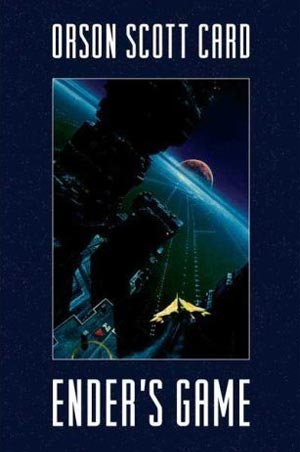
A member of my book club picked “Ender’s Game” to discuss this week, which surprised some of us. Not many of us typically read science-fiction, and this novel came out in 1985; it was expanded from a 1977 short story. Was it really something we could get into?
Still I was curious. Apparently most guys I know seem to have read “Ender’s Game,” which won the Nebula and Hugo awards when it came out, and it is being released as a movie in 2013, with Harrison Ford, Abigail Breslin, Ben Kingsley and Viola Davis among others. It’s quite a cast. So I was willing to check out the book to see if it was more than just fodder for teenage boys.
The novel is set in the future after humans have fought two conflicts in space against an insect-like alien creature referred to as “buggers.” It’s about a young, gifted boy, Ender Wiggin, who is taken away from his family on Earth to train for the next war against the buggers at the exclusive Battle School, located in Earth’s orbit. He leaves behind a malevolent brother, Peter, and his beloved sister, Valentine, who he wont see for years.
At Battle School, Ender excels in military tactics amid the non-gravity atmosphere and leads his squad to victory in war games against the rest. He dominates the game but struggles with how his superiors manipulate his life and tip the playing field against him to groom him to be the ultimate leader. The pressures that he is the one to lead the forces to save Earth weigh on him, and he fears he’s like his brother, capable of hurting others.
After a grueling few years, he’s promoted to Command School, where a former war hero, Mazer Rackham, trains him using a war simulator. Soon Ender is commanding fleets on the simulator, practicing all-out war against the alien buggers. The simulations ramp up until his final test, which is like no other. What follows is an abrupt twist at the novel’s end that took me a bit by surprise.
Essentially, it’s a novel that involves becoming a leader, and what makes a good one. There’s a lot of war games and practice in it. I guess that’s why the U.S. Marine Corps has required the book in the past on its reading list. But it also raises ethical and moral questions about the military and waging war or obliteration.
“Ender’s Game” took me a while to get through, but I found it a surprisingly decent read, even though it’s not something I would normally pick up. It’s reading that’s a bit geared to young adult males, but it’s also semi-thought-provoking sci-fi, which is worth picking up every once in a blue while. Continue reading
Posted in Books
5 Comments
Waging Heavy Peace
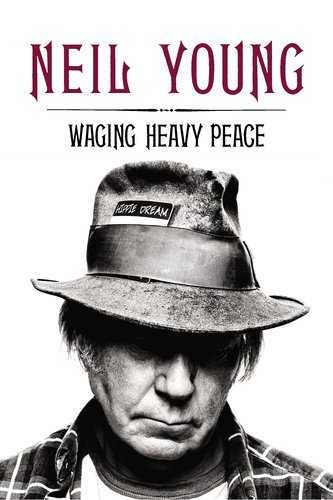
Although the early ’80s were a time of a lot of gushy pop and new wave music, I recall relying on Springsteen, Neil Young, and the Pretenders to see me through high school. Back then, I was only able to bring a select group of treasured vinyl records off with me to boarding school. Among these were Neil Young’s 1977 three-record set “Decade,” which had 35 of his greatest songs up until that point, and “Live Rust,” his double-LP live album released in 1979, which is a fantastic concert recording of 16 of his classic songs.
Holy smokes I played these two albums into the ground in high school. They blew me away. Neil wrote and played songs with such soul and genius. As the years went on though, I didn’t follow his music as closely (he’s been so prolific with various artistic departures), but there have been a few albums I’ve liked. More recently his 2007 release of “Live at Massey Hall: 1971” awed and reminded me of the classic Neil.
I wasn’t about to miss his memoir “Waging Heavy Peace” to get a glimpse behind his trove of amazing songs and his long history in rock. Heaven knows, there’s been an explosion of rock star memoirs these past few years with books from Bob Dylan, Patti Smith, Eric Clapton, Keith Richards, and now Pete Townshend too. Admittedly, I’m a sucker for these memoirs. Oh to get a glimpse behind the lives of such musical heroes!
As far as Neil’s memoir goes, it’s got a bit of everything in it and is not in any chronological order (a passage about 1965 could well be followed by something that happened in 1995). He writes about his life seemingly as things come to him, about memories or ideas or his family and friends, or his bands and music, or what he’s currently up to. It’s all quite down to earth, conversational and seemingly earnest. He seems like an old, affable hippie who’s seen and done a lot of things and is trying to become a better person in later life, where he’d once perhaps been quite difficult or prickly. Neil’s always been known to be his own person with own artistic direction and has quit bands or fired musicians wherever he felt it necessary.
He talks a tad about this in the book, his regrets of things he’s done but mostly the memoir is filled with heartfelt gratitude towards his very close family, friends and musical collaborators. He speaks of those who’ve been with him with a lot of admiration. There’s hardly a bad word about anyone or any acrimony in the book. And his love for his wife and kids, two of whom have physical disabilities is quite touching.
What surprised me I guess is to learn that Neil had polio as a child and also has suffered from epilepsy. But despite that, he’s always been highly productive and involved in various projects. I didn’t realize he was an inventor of sorts, making parts for model trains, converting a car (the LincVolt) to use cleaner power technology, and creating a device to hear music with a higher quality of sound. Part of his book sounds a bit like an infomercial, plugging his innovations. They’re interesting ideas no doubt, and his passion for his hobbies seems real and consuming. I was a bit amazed by all of the various projects he’s involved in, and how productive he is; he doesn’t seem to be slowing down any. In fact, he’s in concert with his band Crazy Horse this week in our town. (How coincidental!)
I enjoyed his memoir quite a bit. It’s both humorous and touching at times and a bit different. In it, he sporadically touches on the various pieces of his life: from his Canadian upbringing to his start in music, his hitting it big in L.A., bands and touring, his life at his California ranch, his hobbies and film projects, and his place in Hawaii. I think Neil’s muse as an amazing songwriter comes through in it. There’s some insight into songs and albums, but I almost wish there were more of this and less of some of the other ramblings. I’m still wondering about “Heart of Gold” and “After the Gold Rush.” But apparently Neil will be writing another book or so he mentions. I guess 498 pages of “Waging Heavy Peace” was not enough for him! So stayed tuned. Continue reading
Posted in Books
10 Comments
Mountain Book & Film Festival
I’m in Banff this weekend taking in the world-renown mountain book and film festival here, which always has an amazing array of adventure, exploration and nature footage. This year is no exception as I’ve seen an awe-inspiring slide-video presentation by Austrian mountain climber Gerlinde Kaltenbrunner about her 2011 trek up the north side of K2, the last peak in her quest to climb the world’s 14 highest peaks of more than 8,000 meters.
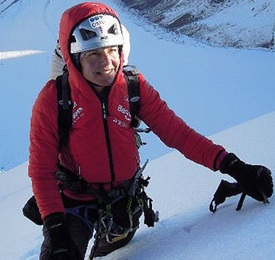
Prior to this film festival, I didn’t really know much about Gerlinde, but her climbing feats are nothing short of heroic. As if scaling Everest and the other highest mountains weren’t enough, she does it without using any supplementary oxygen or high-altitude porters. She goes with her own team but is totally reliant on her own energy to get her to the top of each mountain. It’s mind-boggling! Just think: no oxygen, or porters! She’s truly in elite company to be able to do this. Surely after climbing the 14 highest peaks over 14 years, she deserves to be National Geographic’s Adventurer of the Year for 2012.
I’ve also seen a neat film here called “Crossing the Ice” about two Australians (Cas and Jonesy) who trek unsupported from the coast of Antarctica to the South Pole and back, pulling all their own food and gear on skis, and living to tell their tale with great determination, humor and humility despite the harshest of conditions. The plot thickens as a Norwegian is attempting the same record-breaking feat at the same time, initiating an informal race that echoes the 1912 race to the South Pole between Britain’s Robert Scott and Norway’s Roald Amundsen. But this time the ending is quite different. The film is an uplifting and touching experience of comradeship over struggles that are hard to even fathom.
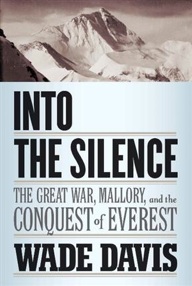
Another cool event I’ve seen here, has been a slide presentation by anthropologist and ethnobotanistWade Davis who recently completed his book of 12 years in the making called “Into the Silence: The Great War, Mallory, and the Conquest of Everest,” which seems quite fascinating. It’s an in-depth look at the men who mounted the first expeditions on Everest in the 1920s and their backgrounds, which were all affected by the toll of WWI. Taking risks and facing death were something most of these men had already long experienced.
And then there’s “Bear 71,” a 20-minute web documentary about a grizzly bear who was collared at age three in Banff National Park and followed during her life via cameras throughout the park until she was tragically killed by a train. This illuminating webdoc raises various questions and issues and is worth watching here.
Today I’m going to see another round of films on this last day of the festival. For those interested in really cool adventure and nature films, you might be able to catch the best from the Banff Mountain Film Festival as it travels around to places in North America. If you do, I’m sure you will be glad you did. Continue reading
Posted in Books, Movies
12 Comments
The Book Thief
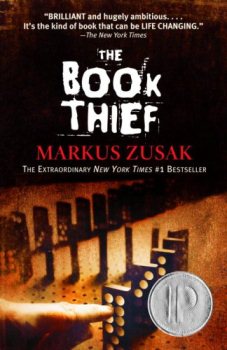
“I have hated the words and I have loved them, and I hope I have made them right.” — Liesel Meminger
Most will recognize that line and character from Markus Zusak’s 2006 mega-selling, young adult novel “The Book Thief,” which appears to be one of the all-time favorites among book buyers and bloggers. I received it as a gift in 2006 but then it sat collecting dust on a shelf and wound up in storage when I moved. So I’m perhaps one of the last bloggers to read the book, which I picked for my book club to discuss next week.
I’m sure you’re familiar with what it’s about: it describes a young, at first, illiterate girl in Nazi Germany who comes to live with foster parents in a working-class neighborhood outside of Munich and takes to stealing books during the escalation of WWII. She befriends Rudy, a boy who dreams of being the runner Jesse Owens, and Max, a Jewish fist fighter, who her parents take in and let live in their basement, hidden away from the Nazis.
I had heard so much praise about “The Book Thief” but didn’t know what it all entailed until I read it. What surprised me and I felt was unique about this particular WWII story is that:
a) It’s narrated by Death, which could have come across quite morbid, yet Death here is sympathetic to humans and feels bad about taking souls away during such awful wartime
b) It’s about a non-Jewish German family inside the country who isn’t exactly in favor of the Nazis (rarely do you get this perspective)
c) It’s about language and the power of words; how Hitler destroyed people with his words and yet how the girl Liesel tries to steal them back, treasuring the books she takes and her reading of them
d) And lastly, it’s a considerably dark and sad story, as many WWII tales are, but this one surely doesn’t sugarcoat the ending. Only a few characters survive, which is quite bleak, especially perhaps for a novel that’s labeled “young adult.” Maybe young adult books are often killer-bleak yet lighten toward the end, but this one definitely snuffs some lights out just when you’re hoping they’ll make it out okay.
With so many themes and nuances, “The Book Thief” will definitely make for an interesting discussion on book club night. I am glad I finally read it. Liesel Meminger and her family are memorable characters, and the book is visual, unique and at many times powerful. I’m sure it will stay with me for quite a while. The only thing I wasn’t sure of is the book’s narration by Death which at times I grew weary of. I just wanted to cut his part and get on with the story. But including it does offer an eerie, overarching perspective on war. In places, Death’s narration serves up an awful foreshadowing that you wish wouldn’t come true. Continue reading
Posted in Books
19 Comments
Fall days


Happy fall colors! The photo above was taken yesterday while I was out biking. It was a beautiful day as has been most of September.
We’ve had a good week here (my bday week), mainly working on incorporating our new puppy’s schedule with ours. She’s learning quickly, especially on such important things as: potty training 101, how to sleep through the night, and how to be a good doggy in her car crate.
I did finish a book this week for book club (called “Snow Job” by William Deverell) but since it was popular-fiction-fare that I didn’t pick, I didn’t feel the urge to review it. Needless to say, it wasn’t exactly my cup of tea.
Instead I’m moving on to reading three on my list: “The Book Thief” by Australian author Markus Zusak (I know I’m the very last blogger to read this!), “The Passage” by Justin Cronin (I’m excited he’s releasing the second in the trilogy soon), and “Sweet Tooth” by Ian McEwan, whose novels I usually really like. So I need to rev up my reading over the next few weeks.
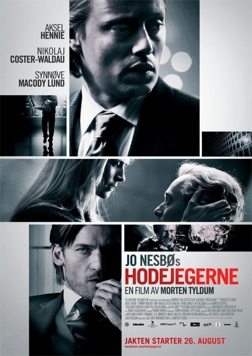
In movie news, I saw the Norwegian thriller “Headhunters” adapted from the book by Jo Nesbo. It’s in Norwegian with English subtitles but is easy to follow, and has a wild chase and twists. It’s about a job headhunter who steals paintings on the side in order to shower his wife with a lavish lifestyle. But when he tries to steal a valuable painting from a former mercenary all hell breaks loose. I’m sure he wishes he never got involved in that heist. I’ve never read Jo Nesbo’s books but obviously they must be fast-moving page-turners. This film captured my attention all right but turns pretty violent and contains a scene with an outhouse that you won’t soon forget. If you like thrillers, you might like it.
How was your week? And have you read the books mentioned above? Continue reading
Posted in Books, Movies
9 Comments
The Wettest County in the World
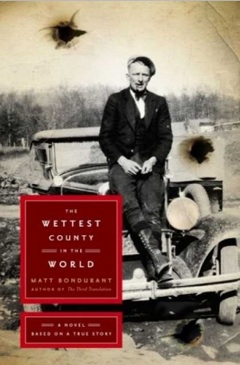
I’ve been up to my ears in moonshine so to speak. I just finished Matt Bondurant’s 2008 historical novel “The Wettest County in the World” about the bootlegging that went on in Franklin County Virginia during Prohibition and then I saw the new movie adapted from it called “Lawless.”
Although the movie is decent, the book, as usual, is far superior. It’s a story about three brothers (actually the author’s own grandfather and great-uncles) who illegally ran moonshine stills and distributed “white lightning” under the cover of their filling station. It was apart of the ’20s and early ’30s when moonshine activity exploded in the poor Virginia county amid the Blue Ridge foothills. “The Bondurant Boys,” as they were known, were like many of the residents there involved in the illegal liquor trade. The Bondurants came up against law officers who covertly demanded their cut of the bootlegging profits. What happened in real life was a bloody showdown.
“Wettest County” is a novel based on that true story, which the author pieced together from news articles and filled in the gaps with his imagination. His grandfather never talked about his moonshine involvement other than to confirm he had once been shot. The rest the author dug up and turned into a vivid and resonant account.
The descriptions and atmosphere are right out of Prohibition- and Depression-era times. It’s direct and often violent, comparable to some of Cormac McCarthy’s writings but perhaps with more hope and less darkness. The brothers overcome various harsh realities, including the early loss of their mother and two sisters in the flu epidemic, and the night the head brother, Forrest, is left for dead with his throat cut open by two rival goons.

The story is exceptional and well written, but the novel isn’t totally easy. Most of it’s from Jack, the youngest brother’s point of view, but one thread conjures Sherwood Anderson, the author, who covered the resulting bootlegging trial. It jumps in time back and forth from 1935 to earlier. It gets a bit confusing or distracting a few times and I lost some steam in my reading about half way through, wishing parts might be a bit shorter. But still I took away from it an interesting dose of moonshine history and a story forever etched in my memory. I’d be interested to check out Matt Bondurant’s latest novel “The Night Swimmer” as he seems quite a writer to watch.
As for the movie “Lawless,” prepare yourself for some uncomfortable violence. For me, the screenplay was missing some of the essence of the novel. It’s too bad because the cast is quite good, albeit the foothill dialect meandered a bit. It’s still pretty decent and might not be too far off from other such attempts at novels like “All the Pretty Horses” or “Cold Mountain” that were moved to the silver screen. Lyrical books are just hard to match in movieland. Continue reading
Posted in Books
4 Comments
Surfacing
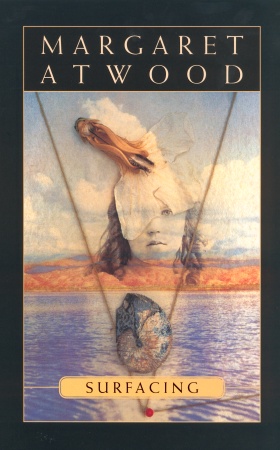
Margaret Atwood’s “Surfacing” is a bit of a creepy little novel about a woman who returns to her hometown in Quebec to look for her missing father. She brings her boyfriend along and a married couple who accompany her to her family’s old cabin on a remote, woodsy island. But with her father disappeared and her mother deceased, all that’s there are her childhood memories, which seem to overtake her. It’s while she’s staying on the island to look for him that her mind begins to unravel.
Check out the book’s cover; doesn’t it make you feel a bit uneasy? In that respect, it slightly reminded me of Dennis Lehane’s “Shutter Island” from 2003. But “Surfacing” was published 40 years ago in 1972, and has a lot of themes going on in it from that era, particularly Quebec’s separatist movement, Canadian nationalism, feminism, and environmentalism. The main character feels alienated by social pressures that she play a particular role because of her gender – which makes her respond by withdrawing.
“Surfacing” feels like it’s from the late ’60s – the four characters are hippy-ish — but still the novel seems quite potent today. Partly that’s because Margaret Atwood is a master who doesn’t mess around getting her themes across, but also it’s because these themes still linger. I had to grin a bit when the character David wants to drive the “fascist pig Yanks” out of Canada. The American “infiltration” up North is still a real sore point among quite a few.
I liked the novel as I felt as if I were on the island with the four characters – one of which is a chauvinist jerk — and there’s an ominous feeling that something eerie is going to happen. It’s quite tangible but towards the end, I did have to read some passages a few times over to make sense of what is going on. It gets quite loopy and is not totally easy to understand in places. But the writing is quite lyrical and otherworldly.
This is my third novel that I’ve read by Margaret Atwood, who I think is such a unique and powerful writer. “Alias Grace” is perhaps my favorite, but this one isn’t shabby either. I plan to keep reading Atwood and other Canadian authors because I live in Canada now – and want to familiarize myself with the great fiction of this vast and wonderful country. Continue reading
Posted in Books
4 Comments
Wild
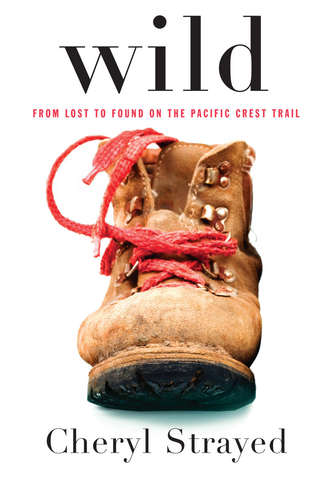
I made this trek and I’m glad that I did. Not the Pacific Crest Trail that Cheryl Strayed hiked 1,100 miles from the Mojave Desert through Oregon doing but her memoir about her long walk in the summer of ’95. There’s plenty in “Wild” that might rile you: particularly how crazy it is to attempt such a journey so ill-prepared and by yourself at age 26. Wouldn’t you practice or get in shape first? Take a test-run, a buddy, and enough money? Know what you’re doing? I had to roll my eyes at the beginning: it seemed pretty dumb if not totally dangerous. She is in agony most of the time from boots that don’t fit and toenails that fall off and pockets short of coin.
But people that are lost and youthful don’t always make the wisest of choices. She acknowledges her “idiocy” at the journey’s beginning. But before going, Cheryl had been dealt a heavy blow with her mom dying at 45 of cancer that left her reeling. Her siblings scattered as did her stepfather. She was using drugs, fooling around on a husband she cared about and going nowhere under a heavy maze of grief. After seeing a book about the Pacific Crest Trail (which goes from Mexico to Canada), she gets the idea to hike a good portion of it in hopes that it will turn her life around. And so her journey begins.
Admittedly, I’m a bit of a sucker for healing-seeking, journey-type stories and devoured Jon Krakauer’s “Into the Wild” about a 24-year-old’s attempt to live in the wilds of Alaska. Fortunately, Cheryl’s trek has a much happier outcome. The trail works its magic on her through all the pain, endless miles and solitude of walking in the wilderness alone. She does befriend quite a few fellow PCT hikers along the way and has various adventures, coming upon rattle snakes, bears, a migration of frogs, and non-PCT folks who are most often a bit weird but friendly.
Cheryl tells of her trek rather open and straightforwardly, often unsparingly of herself. “Wild” is not as gripping as Krakauer’s books, but it did keep me reading and thinking about it, as if I were traveling alongside her on the trail. I felt for Cheryl over the sadness of her divorce and mostly her mother’s death, which is palpable and enormous in the book. I wanted her to find solace. And indeed she seems to grow stronger and more courageous as she moves forward along the PCT.
There’s some good passages in the book, a few profound about her life growing up and her mother and family and being on the trail day and night and the hardships life throws you. I might not always agree with her choices but she comes across most often heartfelt, likable and a bit irreverent.
One thing that sort of made me hesitate about “Wild” is that it was published over 15 years after she did the trail, apparently from journals and such. Maybe that holds back some of the vividness or action in parts of the book. It’s a bit amazing she can piece together all of the conversations from back then. But despite whatever flaws, “Wild” still hits a human chord that leaves a pretty deep impression. And it might just leave you wanting to do the PCT yourself. Continue reading
Posted in Books
5 Comments

